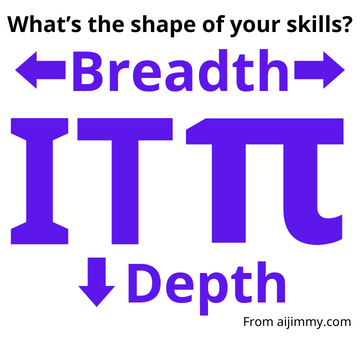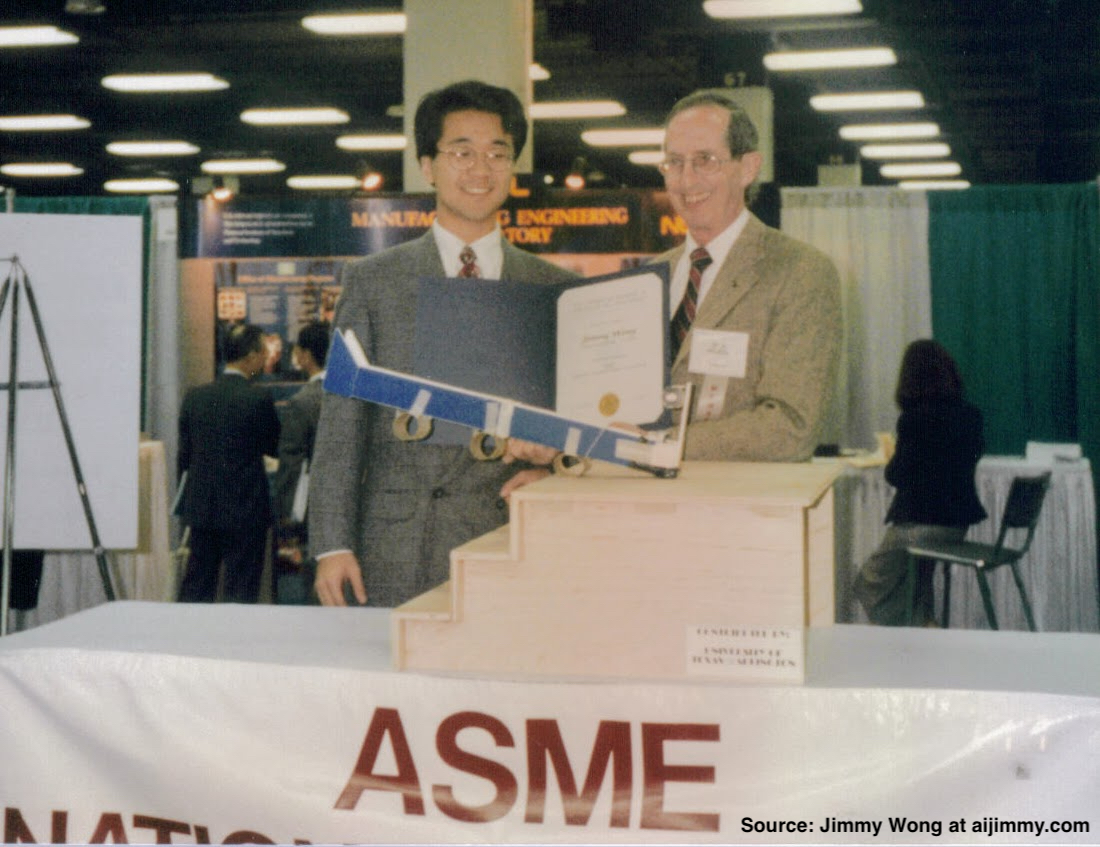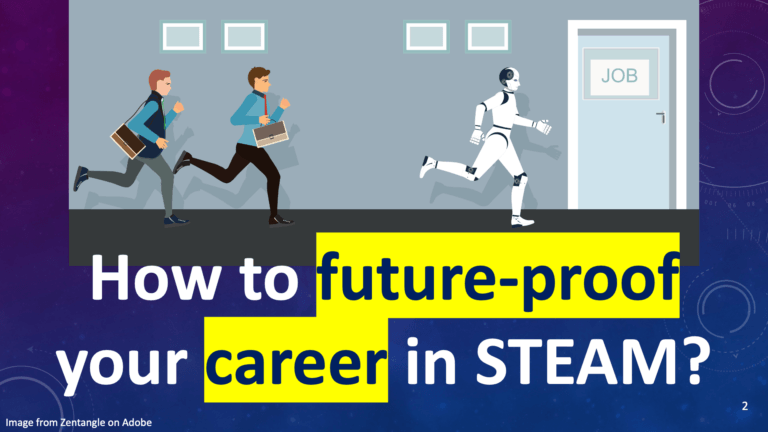Strategies to Learn New Skills in the Age of AI

In today’s rapidly changing business landscape, staying relevant and adaptable is key to thriving in the age of AI. I believe professionals should adopt the strategy to learn new skills for both depth and breadth in order to expand their impact in the world and future-proof their careers.
To illustrate, let me tell you about Ivan (not his real name), who worked for 25 years as a seasoned engineer in the semiconductor industry in Silicon Valley. He thought his job was stable. He was a senior staff engineer with a PhD. When an unexpected layoff happened, his job was abruptly eliminated. His experience was almost exclusively in the technical domain of semiconductor chip production, which was not transferable elsewhere. Other companies in the same industry were downsizing as well. He struggled to get back to meaningful employment after getting laid off.
In addition to Ivan, this same story happens again and again with many other people, whether they are financial analysts or marketers or any other role. The tech industry, especially, demands workers with frequent skill refreshes as technology and the market changes so quickly.
Strategic Choices to Learn New Skills
“Unless you’re continually improving your skills, you’re quickly becoming irrelevant.”
— Stephen Covey
In the punishing pace of today’s marketplace accelerated by AI and technology, the need for skill diversification is critical. However, how do you choose which skills to invest in?
Many epic strategy games have a concept of a skill tree or technology tree. In them, invest in a specific skill now to get additional benefits in the future, and also to open up new options for even more skills later on in the game. If you have limited resources to learn new skills or technologies, how do you decide what to learn? Similarly, in the epic of your life, what skills do you invest in for yourself?
Today, let’s discuss strategies for learning new skills. Specifically, we’ll explore the pros and cons of three strategies: the I-shaped, T-shaped, and Pi-shaped professionals. All of these strategies require some degree of specialization, compared to pure generalists who are perceived as not having anything deep to offer.

Are you an I-shaped, T-shaped, or Pi-shaped professional?
I-shaped Professional
The I-shaped professional, exemplified by Ivan, possesses deep expertise in a single discipline, like semiconductor chip production or software development. Ivan could produce well-crafted beautiful code that executes flawlessly and scales efficiently. Hence he got steady promotions in the earlier part of his career.
However, the risk lies in the potential obsolescence of specialized skills due to emerging technologies or global competition. Sufficiently well-crafted beautiful code can now also be produced by new AI technologies like ChatGPT and Copilot, or by hard-working individuals remotely in different parts of the world. Big enterprises need to hire workers with deep specialized skills, but there’s a risk for workers in remaining specialized.
T-shaped Professional
The concept of “T-shaped professional” was popularized by both management consultancy McKinsey & Company and by IDEO. IDEO is the leading innovative design firm co-founded by professor David Kelley, whom I had the benefit of studying under in his product design programs at Stanford University.
The T-shaped professional also goes deep into one specific discipline or domain, but has a significant breadth of other experiences and skills too. For example, Terry, the T-shaped professional, has much expertise in a core discipline like computer programming. But Terry also has a breadth of experiences in a wide variety of topics such as electronic health records, project management, blog writing, and travel photography. Terry is not an expert in each of these breadth areas, but still has enough experience to confidently teach newbies if needed.
Given the time limits in our lives, as a T-shaped professional, you might not go as deep into your core discipline as the I-shaped professional to get the same benefits in your early career. However, you would be a bit more well-rounded to tackle a more variety of business problems, and have more career opportunities whenever the market changes.
Pi-shaped Professional
The newer trend is the Pi-shaped professional. Pi is the Greek letter that we’ve seen in our math class. Its shape π is similar to the T-shape, but with two legs instead of one. For Pi-shaped professionals, they also have breadth of skills, but they go deep in two core disciplines rather than one.
For example, Paula, as a Pi-shaped professional, might have similar computer programming skills as the earlier T-shaped Terry. But this Pi-shaped Paula also goes deep in her second core expertise, specializing in all sorts of healthcare regulations and biopharma research as well. Paula has more career options to switch to a job that utilizes her expertise in the 2nd core discipline, such as becoming a writer or spokesperson for healthcare trends.
Beyond: M-shaped Professional?
While some people propose even more intricate shapes like the M-shaped professional with expertise in three or more core disciplines, I think it starts losing its potency beyond a certain point in too many specializations.
For most people, there’s not enough time in a lifetime to really develop and retain deep expertise in 3 or more areas and still develop the needed breadth skills like communications and leadership. The problem with lots of different smaller things is that their value don’t compound together, compared to deep expertise in one or two areas, which has potentially exponential value going deeper in each.
Perhaps only a handful of exceptional folks from history like Aristotle and Leonardo da Vinci and Benjamin Franklin and Linus Pauling could really claim mastery in so many multiple domains.
Mastery in one or two areas, coupled with essential breadth skills, often yields the best overall value for professionals. Stick to a strategy of learning skills as a T-shaped or Pi-shaped professional.
Jimmy’s Journey to Learn New Skills from Rockets to Data Science
In high school, I loved both physics and computer science. I started college at UCLA as an aerospace major because I aspired to become a “rocket scientist” combining both physics and computer science to do computational fluid dynamics and orbital dynamics. However, in the first 3 weeks of college, as I saw that the current economic recession was affecting the job market, I decided to switch to a broader mechanical engineering major within the same university department to avoid getting locked into a niche.
Engineers Can Also Learn New Skills in Business
However, I wasn’t excited about mechanical design. Through leading the local ASME student chapter, I got a taste for the business side of engineering instead. Although I could not envision myself as an MBA, I knew that I needed to expand beyond my technical skills into the business domain to grow later in my career–I could not remain an engineer forever.
For graduate school, I went to Stanford’s manufacturing systems engineering program. It was a hybrid program that included interdisciplinary mechatronics (e.g. robotics) classes for “smart product design”, as well as broad business classes like accounting and entrepreneurship and organizational behavior. I really enjoyed learning both deep technical and business disciplines. I believe it opened up unique career opportunities for me.

Jimmy Wong receiving recognition at ASME National Student Design Contest in Chicago
In my early career, I wrote software for both an aerospace company and a GPS company. With my new software skills, I found additional opportunities as a business systems analyst for ERP, CRM, HRMS, Financial, and Sales systems, which built up my breadth of business process experiences.
Eventually I was promoted as the manager of our business intelligence and data warehouse team at the company. I further deepened my expertise in all things related to data when I joined LinkedIn and led data science teams for 12 years. Throughout, I realized the need to continue to invest in my own learning.
- I learned the online advertising and marketing domain for over 12 years
- I stretched my soft skills by being active in Toastmasters to build my public speaking and leadership skills
- I took a Stanford continuing education course on Product Marketing for Lean Startups
- I stayed hands-on with data science analyses and building predictive models
- I got experience launching multiple websites and monetizing them
Learn New Skills Through Volunteering
With all these experiences, my technical expertise in applying data to solve business problems deepened. However, I also developed my other breadth of skills too. In addition, through volunteering with various groups as a mentor and career coach, I learned more about people’s careers and the story arcs that each of us go through.
All these various experiences have given me more options for what I can do in my career now. Each of you have your own unique career journey, and it’s never too late to invest in learning new skills.
Academics Now Embrace Interdisciplinary AI
The trend for both breadth and depth is also clear in academia. In the past week, I heard from both Stanford and MIT regarding the need for interdisciplinary education and research.
Stanford Interdisciplinary AI Research
The Stanford Institute for Human-Centered Artificial Intelligence hosts regular sessions that I attend. Last week, Ge Wang and Vanessa Parli interviewed James Landay and Jessica Riskin on what people really want from AI in the research world. One of the topics was the concept of the Pi-shaped professional. Having deep expertise in computer science might no longer be enough, even for a hot area like AI. The speakers proposed computer scientists to also gain expertise in a second area such as ethics or biology, where they can apply their computer science skills to a specific domain.
Overall, Stanford HAI is organized to promote interdisciplinary research for AI by breaking down department silos and cross-fertilizing ideas for new innovations and enduring principles.
MIT Interdisciplinary AI Research
In addition to Stanford, I also heard from MIT last week, where my son attends school. Sally Kornbluth is the new president of MIT. From her time at Duke University, Kornbluth has consistently pushed for interdisciplinary efforts. Even with new grants for AI research at MIT, the research teams are “interdisciplinary teams of faculty and researchers” not just from the computer science department. In her recent visit to local San Francisco MIT boosters, she mentioned the importance of computer science students learning not just AI but also gaining domain expertise in an area such as biology.
As you see, both Stanford and MIT have taken the strategy of nurturing interdisciplinary collaboration in order to drive more innovation in AI research. Having expertise in just computer science is not enough nowadays to build the meaningful AI systems in a complex interconnected world. Similarly, I believe each individual should also adopt a strategy to learn new skills blending their deep core expertise with wide breadth skills to make more meaningful impact in the world.
Recommendations to Learn New Skills for Improving Your Career
Whether you’re a student contemplating courses or a professional pondering a career switch, making deliberate choices in what new skills to learn is crucial. Which skills will you prioritize to learn that will serve you for a lifetime?
Consider the I-shaped, T-shaped, or Pi-shaped professional strategy based on your goals. My advice for folks in their early career is to grow expertise deep in one domain like an I-shaped professional first. Then, for the long run, keep investing in a breadth of skills and domains too, particularly communications and leadership, to be a T-shaped professional. If you get even more opportunities to learn new skills, then try growing mastery in a second core area as a Pi-shaped professional, even if you need to go back to school.
Keep learning at any age. Together with building your network and personal reputation (your brand), learn new skills to help you future-proof your career in this age of AI.
Originally published on aijimmy.com. Feature image by Freepik








